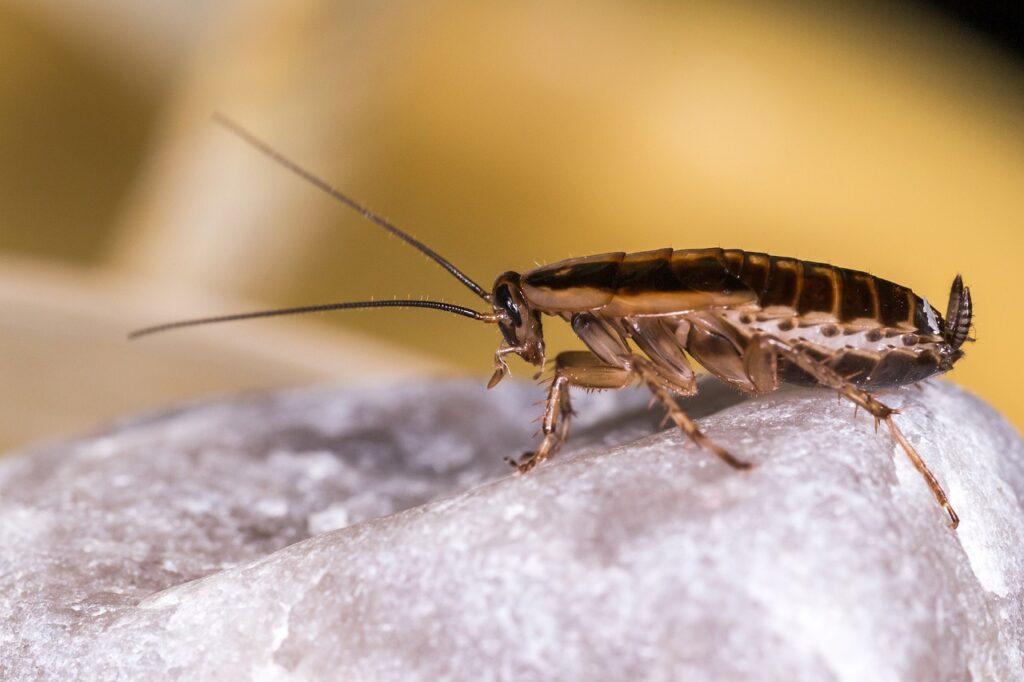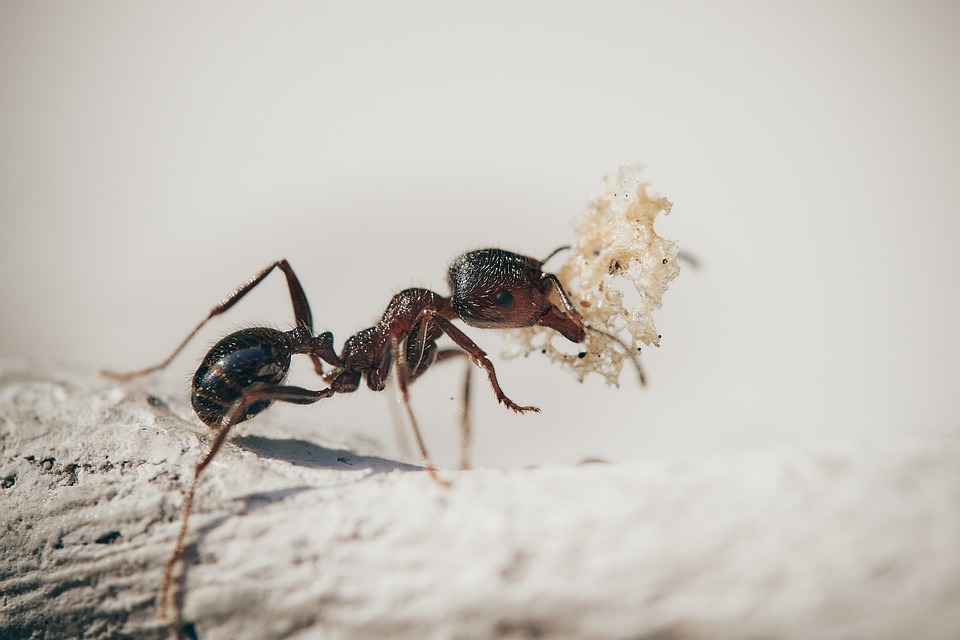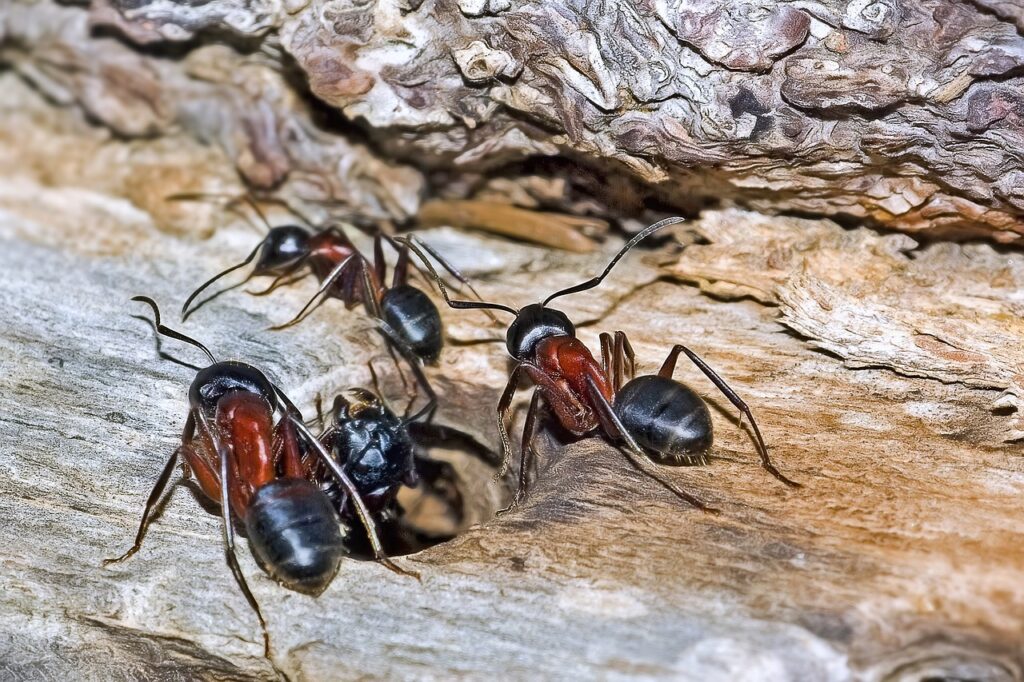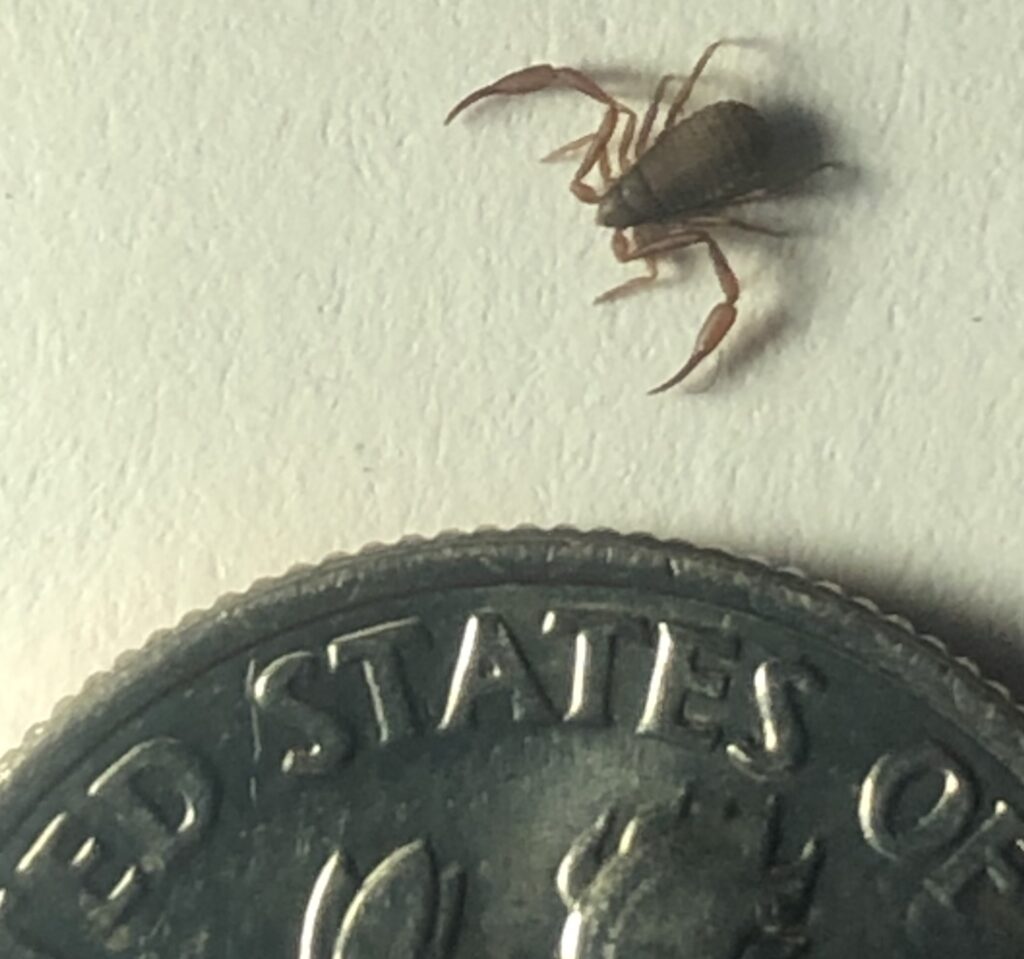No matter how much we love the indoors, some of us would prefer that it stays, well, outdoors. It’s disconcerting when wildlife starts to cross boundaries and show up in our human spaces. Also, since they aren’t familiar with household habits, many outdoor animals may not always be the most well-behaved guests. At worst, some kinds of bug in your house could be harmful.
In most cases, uninvited animal houseguests are arthropods, the armored group of small invertebrate organisms that include insects, spiders, and centipedes. Most people don’t feel particularly warm and fuzzy about any arthropods. Even if they aren’t running for the door, people tend to have one question:
Is this big in my house dangerous?
Whether or not a bug in the house is a minor inconvenience, a source of excitement and curiosity, or cause for alarm depends on what kind of bug it is. So knowing who they are is key. It’s good to ask—and answer—this question:
What is this bug in my house?
My goal for this mini-series is to give you an introduction to some common household invertebrate “guests” and whether you should be concerned about them. Of course, if you have any species or types of bug you’d really like to learn more about, don’t hesitate to let me know using the contact page.
Your household guests – rated
I’ll give each bug a guest rating to give an overall idea of its behavior. Many species will be labeled as “harmless“, meaning that they won’t really do much of anything to you, your pets, or your family. A lot of insects are like this, so please always take a moment to think and ask questions before you grab a flip-flop or rolled up newspaper.
Wherever an insect could actually damage renewable things like food or clothing, I have called them “unpleasant“. In the less common case that they can damage property or affect our health, I called them “harmful“. Finally, those that actually help control damaging species are “helpful“.
Cockroaches
These skittering, scavenging survivors are often nightmare fuel even for committed nature lovers. The American cockroach (Periplaneta americana) is most common in houses, where it feeds on just about any available food. They are most active at night when we aren’t looking.

But are they dangerous? Yes and no.
Cockroaches don’t have the mouth parts or the temperament to deliver a nasty bite. They don’t feed on people or pets, or have any ability to sting. They will try to avoid you at all costs (unless something is really wrong with them). In general, they aren’t a direct threat to you or anyone else living at your house. However, in all of their scavenging, especially in human spaces like urban areas, cockroaches come into contact with a lot of dirty stuff.
Entering the fruit basket in your kitchen or the slightly open bag of Doritos in the pantry at 3am, a cockroach could be carrying harmful fungi (think molds) or bacteria like E. coli that are dangerous to people. Particularly severe infestations with lots of insects can accumulate a ‘dust’ from their body parts and droppings over time. This can be dangerous to people with allergies if it gets into ventilation systems.
Overall, cockroaches aren’t going to kill you, chase you, or hurt you, but they can bring some nasty stuff into your house that you don’t want there. They can also make food spoil faster and go to waste. Definitely not a welcome guest but perhaps not actually the stuff of nightmares.
Guest rating: unpleasant, possibly harmful
Ants
These are highly social insects in the family Formicidae. Ants form large colonies consisting of a fertile queen and any number of non-breeding (sterile) workers, and soldiers that keep the colony going. Ants are generally not dangerous; even invasive fire ants (Solenopsis invicta) which are aggressive and biting, can’t do a lot of damage unless you’re allergic, and aren’t likely to come inside.
Ant colonies can range from hundreds to thousands of individuals, so they need a lot of food to sustain them. In the case of some leaf cutter ants in Central and South America, colonies can number in the millions. It’s not common to have an entire ant colony in your living space unless you leave a lot of food lying around.
Typically, ants are more likely to find your house during bad weather when they move inside seeking shelter, or in the summer if a “scout” ant finds food and guides her sisters to it. That being the case, ants are not particularly likely to be a persistent problem, so much as an issue once in a while.

If you do have a line of ants coming into your house, they are all following a chemical trail left by the first ant to find the food.
Follow them to figure out what got them excited in the first place, and you should be able to remove it or cut off their access without much problem. Wiping down surfaces where ants have been will also erase the chemical trails they lay down. This will make it hard for other ants to find the spot.
Overall, ants aren’t fun and can show up in huge numbers in a worst case scenario, but they’re unlikely to hurt you or your pets if you don’t live in the tropics. They can eat your food, though, so you don’t really want to let them have the run of the place. Bottom line: You should keep ants outside, but they certainly aren’t worth panicking over.
Guest rating: unpleasant
Carpenter ants
There is one particular type of ant, though, which can be problematic in homes in North America: the Carpenter ants in the genus Camponotus. Carpenter ant colonies nest in moist or rotting wood, so finding them in your home in large numbers is probably a bad sign that you’ve got a leak somewhere, or perhaps flood or rain damage.

Despite what many people think, carpenter ants can’t actually eat wood. They eat the same things that many other common ant species are attracted to—sugary things, and things with lots of protein (like dog food or lunchmeat). Carpenter ants just dig through the wood to make tunnels for their nest: a safe home for them to stay cozy at their preferred temperature and humidity.
Although the water damage itself is probably a bigger threat to your home, the damage that the ants do in tunneling through it doesn’t help. Because they can add to the damage to your property, I rate these ants as harmful.
Guest rating: harmful
Pseudoscorpions
Pseudoscorpions are not insects at all. In fact, they aren’t scorpions, either (‘pseudo’ means fake). Pseudocorpions can’t sting or pinch you or your pets.
What’s more, psuedoscorpions are T-I-N-Y. So tiny, in fact, that you are not particularly likely to notice them around. Most pseudoscorpions max out at around one third of an inch in length, although the biggest, baddest species yet discovered gets to about a half inch.

With their round bodies and curved, crawly little legs, pseudoscorpions may be confused with ticks, but their pedipalps or claws (often much of the length of their body) are a dead giveaway. As you might guess from those grabby appendages, pseudoscorpions are predators.
Predatory insects are often great to have around.
Predators as teeny-tiny as pseudoscorpions are especially good, because whatever they are hunting is too small to make a mess. In fact, these guys are professionals at eating other invertebrates you don’t want in your house. These include:
- Carpet beetle larvae
- Moth larvae
- Booklice
- Silverfish
- Flies
- Ants
- Mites
They can really clean a house! Typical places to find them are around old piles of books or papers and woodpiles. Pseudoscorpions are cute, tiny and unobtrusive, and experts at annihilating stuff you don’t want in your house. Bottom line—I’d want one as a roommate.
Guest rating: helpful
Silverfish
These prehistoric-looking animals are definitely not fish, but their silvery color and streamlined appearance have a pretty fishy vibe. They have no wings as adults, which is another strange trait for an insect.
This weirdness stems from the fact that silverfish are an ancient group of insects. They show up in the fossil record before even the earliest dinosaurs. Their ancestors are actually among the earliest, most primitive insects ever to walk the Earth.
Like cockroaches, silverfish are nocturnal and will avoid contact with you and your family by only being out in the dark of night. They also tend to flee from light, and you’ll find them more often in places that aren’t busy or frequented by people.

In the wild, silverfish are scavengers of plant material. Like termites, they are one of few animals that can digest cellulose, a tough molecular component of plant cells. They are especially fond of sugary compounds like starches. Indoors, silverfish may eat starch-based adhesives and glues used in books and envelopes.
Do Silverfish eat books?
In fact, finding these little guys in piled of old books is not uncommon, and they can go as far as eating parts of individual pages if given enough years. Generally, though, their ability to damage property is very limited and their shyness means that you’ll only run into them in places you never go.
If you take that book off the shelf every now and then, it will likely be safe from them. Silverfish can’t bite or sting, despite their three long “tails”. Nor do they have any toxic or poisonous compounds in their bodies. They aren’t a danger to anyone in your home who isn’t made of sugar.
Bottom line — silverfish are weird and cute and prehistoric. They are unlikely to bother anyone and can’t do a lot of harm. However, they aren’t doing much to help around the house, either. ,
Guest rating: harmless
I hope this post helped allay some fears and spark your interest in the wondrous world of arthropods. If you’ve got questions about other house guests, drop a comment or send me a message via the contact page on social media. And be sure to check out Part 2 and Part 3 of this blog mini-series when they’re available.

